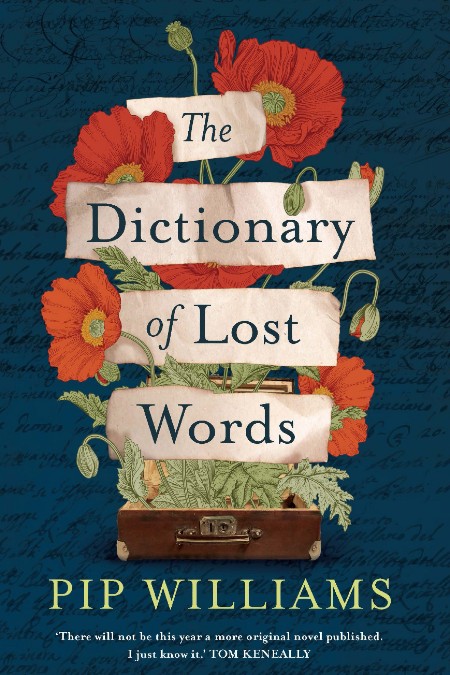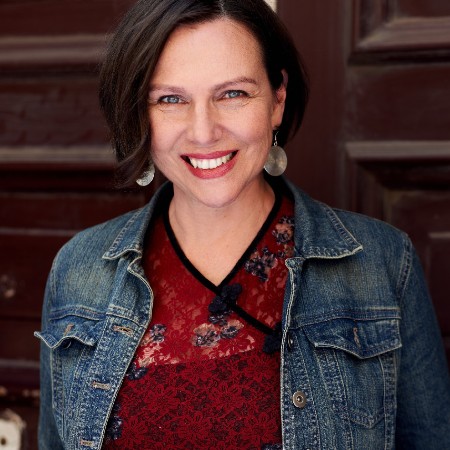
Words are beautiful things.
More than just a collection of letters – although some words like “plethora” and “myriad” are cadence-rich in and of themselves – words give us access to stories, to thoughts and ideas and play a critically-important role in shaping the way we see our world and thus how we see others and interact with them.
For all their beauty and rich meaning however, words are as susceptible to being distorted and twisted according to someone’s worldview, and universally-agreed meanings aside, can be used to push all kinds of agendas.
Dictionaries are so commonplace and benign these days that we tend not to think of think of them as willfully agenda-driven or subversive in anyway, but as Pip Williams demonstrates in her luminously wonderful debut novel, The Dictionary of Lost Words, they can be as prone to them as anything else humanity gets its hands on.
Set in the late nineteenth and early twentieth centuries, when the first edition of the Oxford English Dictionary was being assembled – it may surprise you to learn that dictionaries as we know them are a relatively recent creation – The Dictionary of Lost Words is in many ways a love letter to how evocative and meaningful the English can be (but also how words mean different things to different people and valued accordingly).
Esme Nicoll, a motherless girl whose loving and progressive father is one of a dedicated team working in the delightfully-named Scriptorium (really someone’s elegant back shed in Oxford, England but I think the name becomes it) to realise the English-speaking world’s first assemblage of words, develops a love of words and an appreciation of their depth and power at a very young age.
“I often wondered what kind of slip I would be written on if I was a word. Something too long, certainly. Probably the wrong colour. A scrap of paper that didn’t quite fit. I worried that perhaps I would never find my place in the pigeon-holes at all.” (P. 123)
As the novel begins in 1886, she is content to sit under the table where the team works, asking questions of her father about the meaning of this or that submitted word and the meaning that variably accompanies it – a team of volunteers across England, including Esme’s beloved, unofficial aunt Ditte Thompson, send these notes, or “slips” as they’re known, at a prodigious rate – and soaking up a world that in many ways seems devoted in the most of ways to bringing understandable, curated order to the vast multiplicity of words that make up the world’s most-used language (particularly in 1886 when the English Empire was at its expansive height).
Sir James Murray, who heads up a team which grows to include Esme as she grows up and his daughters Elsie and Rosfrith, is a noble man whose scrupulously decides what will and won’t make it into the dictionary based on well-documented, written usage.
Hence, for every word that is considered for inclusion, there must be a literal paper trail that attests to both its meaning and commonality of usage; that makes sense – simply including a word because it exists does not meet the usual standards of academic rigour and the dictionary is driven very much, so Murray and his team, like to believe by objective standards alone.
But even people as well meaning as Murray and his team, almost all men, are as prone to bias, in this case gender-driven, as anyone and as Esme gets older, she begins to realise that many words are being excluded, either because they are new, in common but unwritten usage or because, and this is where The Dictionary of Lost Words really comes alive with poetic power and persuasion, they refer to the experiences of women which are deemed less important in a world very much run by men.
This is world, of course, where the suffragettes are working hard, through means legal and otherwise – one of the threads of this beautifully and artfully wrought novel concerns Esme’s growing friendship with actress and campaigner Tilda, one of Emeline Pankhurst’s army of women (and some men) committed to bringing equality and fair representation to English democracy – to win women the vote, a narrative element that ties in eloquently and powerfully with Esme’s rescuing of male-discarded words and her growing understanding of the world at large.

While The Dictionary of Lost Words following a strictly chronological route from 1886, when work on the dictionary is already underway (the first volume A to Ant was published in 1884) through to 1928 when the final volume V to Z sees the publishing light of day, and then onto 1989, it is anything but a pedestrian work through history.
Williams bring history alive in ways that we are not usually party to, giving voice to the experiences of women like Esme, her best friend and onetime nanny of sorts Lizzie, her aunt Ditte, Tildam Elsie and Rosrith and a host of other women whose stories are often pushed to the side, historically speaking by the dominating voices of men.
By giving Esme a central role in the novel – she is a fictional character in a world of actual historical figures – and focusing on her accumulation of words beginning with Bondmaid”, which it is discovered in 1901 was left out of the dictionary, we are given entry into the way in which words have been as much of a tool of female exclusion as anything else in a society too long ruled and influenced by men.
As Williams makes movingly and evocatively clear, women and the words they used, were as important and vital as any others, and while Murray may have had good academic cause to pick and choose the words he did, the net effect of his bias, known or unknown to him, was to shut the voices of half of the population and the rich use of language they employed to give sense and shape to the world.
Esme’s illuminating journey to gather these often-ignored words together, which she stores away in a trunk under Lizzie’s bed as a precious storehouse of knowledge and precious mementos of her life, forms the narrative backbone of the book, an emotional centre for almost a century of storytelling and an eye-opening evocation of the ways in which women have been sidelined repeatedly by men intent on representing the world almost entirely in their image.
“We looked at the mess of slips inside the trunk. I remembered all the times I’d searched the volumes and the pigeon-holes for just the right word to explain what I was feeling, experiencing. So often, the words chosen by the men of the Dictionary has been inadequate.” (P. 257)
There is deep, affecting lyricism to The Dictionary of Lost Words, a wholly affecting story which combines rich, historical facts with the truth and vivacity of people’s lives, which were affected by a great many seismic events during the period the book covers including the Great War, the women’s suffrage movement and the ever-escalating rapidity of technological and societal change.
It is impossible not to fall in love with Esme’s thirst for knowledge and integrity of her pursuit of lost and mislaid words, an accidental quest which takes her far beyond her middle class world and into one of marginalised and poor women at the edges of London society whose experience of life is wholly different to that of Esme and to the people who form the make-up of her early life.
As she comes to know people like Tilda and plain-speaking stall owner Mabel, she comes to realise that not only as lives beyond her own wholly different and varied, but that they possess a language that is not represented in the dictionary but is no less valuable or worthy than the words that are included.
What begins as the almost-subconscious act of a curious six-year-old girl saving a word (“bondmaid”) out of a innate understanding that its preservation matters becomes something more vast and important than Esme could have envisaged, her voice heard by people around her and after her who understand that to fully represent a society, every voice must be heard.
That extends of course to its words, and The Dictionary of Lost Words is a passionate defense of the vital importance of ensuring that all words and the life experiences they represent and encapsulate are heard clearly and displayed prominently, but also that the experiences of people these words embody, especially women, are celebrated and upheld, something this most beautiful and evocative of novels does with power, humanity and an insightfulness that will take your breath away and make you glad that people like Esme, and those who write so eloquently about them like Williams, are around to tell their stories.